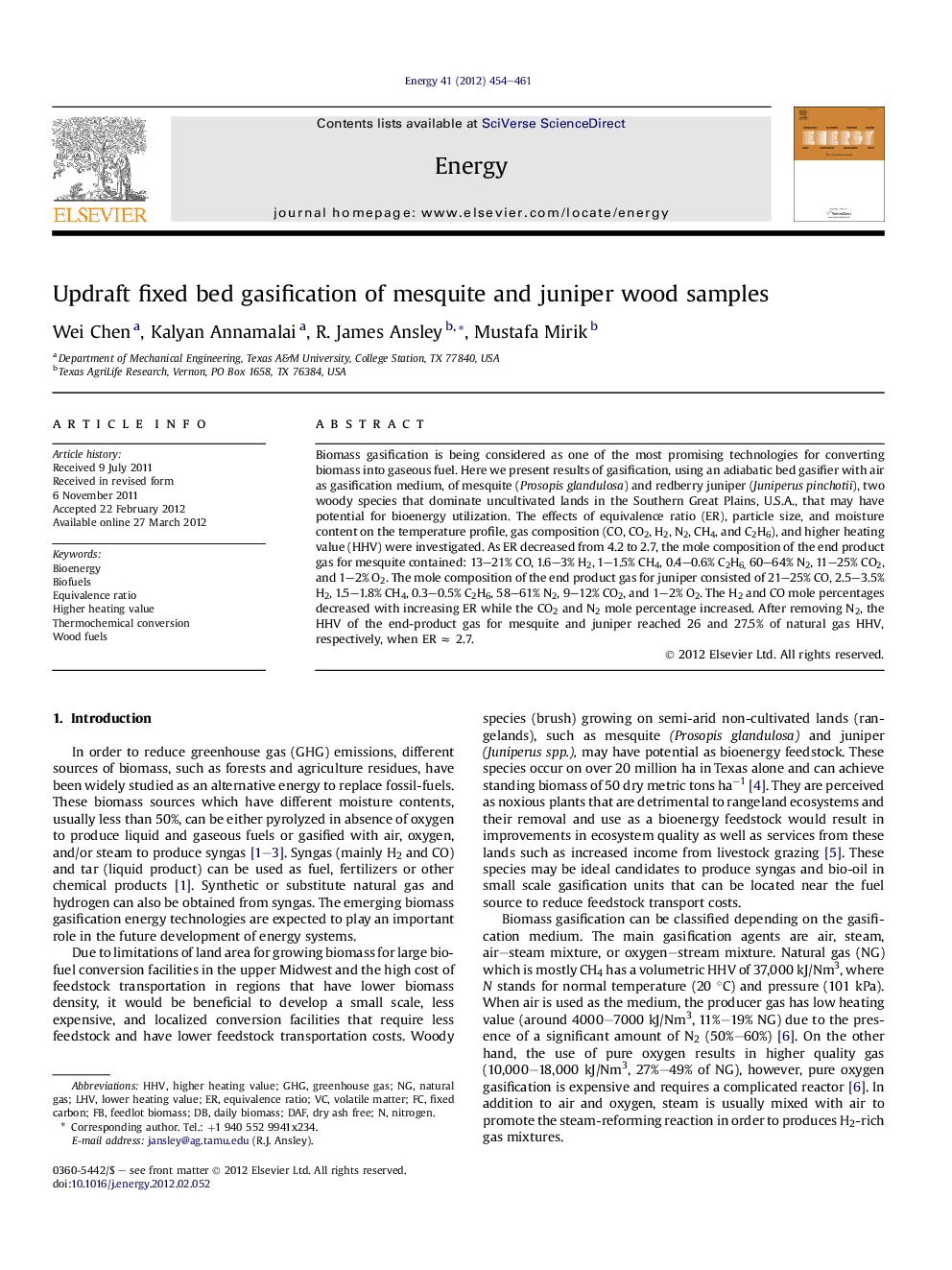| Article ID | Journal | Published Year | Pages | File Type |
|---|---|---|---|---|
| 1733520 | Energy | 2012 | 8 Pages |
Biomass gasification is being considered as one of the most promising technologies for converting biomass into gaseous fuel. Here we present results of gasification, using an adiabatic bed gasifier with air as gasification medium, of mesquite (Prosopis glandulosa) and redberry juniper (Juniperus pinchotii), two woody species that dominate uncultivated lands in the Southern Great Plains, U.S.A., that may have potential for bioenergy utilization. The effects of equivalence ratio (ER), particle size, and moisture content on the temperature profile, gas composition (CO, CO2, H2, N2, CH4, and C2H6), and higher heating value (HHV) were investigated. As ER decreased from 4.2 to 2.7, the mole composition of the end product gas for mesquite contained: 13–21% CO, 1.6–3% H2, 1–1.5% CH4, 0.4–0.6% C2H6, 60–64% N2, 11–25% CO2, and 1–2% O2. The mole composition of the end product gas for juniper consisted of 21–25% CO, 2.5–3.5% H2, 1.5–1.8% CH4, 0.3–0.5% C2H6, 58–61% N2, 9–12% CO2, and 1–2% O2. The H2 and CO mole percentages decreased with increasing ER while the CO2 and N2 mole percentage increased. After removing N2, the HHV of the end-product gas for mesquite and juniper reached 26 and 27.5% of natural gas HHV, respectively, when ER ≈ 2.7.
► Mesquite and juniper were selected for gasification study. ► Low moisture, large particle size and lower ER resulted in high gasification temperature and generated higher HHV gas. ► The end 5 product gas for juniper has a higher HHV than that of mesquite under same gasification condition.
